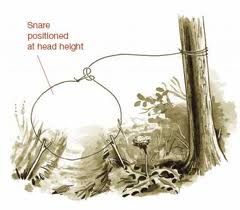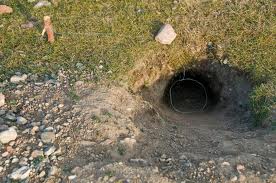3 Simple Snares For Small Game
3 Simple Snares For Small Game
In a total collapse scenario, catching small game may become a necessity. One of the problems with learning a new skill like building a snare, is that there is a bit of a learning curve. The other problem is that many skills are easily forgotten if they are not used often. If you are like me, life has serious demands on your time. Most all of us either have a job or we expand a lot of time in search of a job. Besides that, you have relationships that need attention. You may also be in school or volunteer at church. Whatever it is, you time is probably limited. In this hustle and bustle world, I am honored that you have devoted a few minutes to read Prepper Recon. Today’s post is designed to be easy to remember.
Perhaps the easiest snare is a simple slip knot that is secured to a tree. The hoop can then be supported by a couple of twigs at about head height for the animal you are trying to snare. If you place this on the trail of the animal, it increase the chances of a catch. You can use most any type of string for this snare. Para cord is great, but you could even use a shoe string. If you have options, use the string that has had the least amount of human interaction. Most animals have a much more keen sense of smell than us.
Slip Knot Snare
The next snare is the twitch up snare. This snare has been used by hunters for centuries. it is the snare that we often see in old cartoons from the 60’s and 70’s. This snare is slightly more complicated, but still very easy to remember. Once you look at the diagram and understand the mechanics of the snare, you will always remember how to make it. A slip knot snare is attached to a trigger twig which holds the tension of a bent sapling. Bait is placed near the loop of the slip knot. When the animal disturbs the loop, it knocks the trigger loose and the sapling snaps back into place, thus tightening the slip knot.
Twitch Up Snare
The next snare is also very simple and easy to remember. It simply dangles a noose over the outlet of an animal hole. A small stone can be used to keep the nose in place until the animal runs through. Then the string is attached to a nearby tree or secure object to keep the animal in the capture zone.
Noose Snare
I chose these three snares because of their simplicity and because of how easy they were to remember. Try making them in your home or you backyard for practice. Be sure your check you local laws on trapping before trying to implement any of these snares.
Happy Prepping!
MDG















































